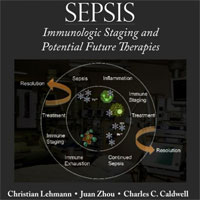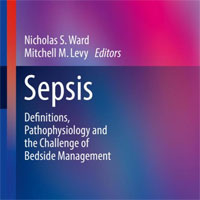Tag: vasopressors
Physiologic Assessment: Variation in Fluid and Vasopressor Use in Shock
The decision whether to give more fluid during the management of shock can be somewhat provider-dependent. This multicenter prospective cohort study evaluated 1639 patients with hypotension requiring vasopressors. The... read more
Cost Analysis of Adjunctive Hydrocortisone Therapy for Septic Shock
Using adjunctive hydrocortisone therapy yields a significant monetized benefit based on inputs from the Adjunctive Corticosteroid Treatment in Critically Ill Patients with Septic Shock and Activated Protein C and Corticosteroids... read more
Factors Associated With Death in Critically Ill Patients With COVID-19 in the US
This study identified demographic, clinical, and hospital-level risk factors that may be associated with death in critically ill patients with COVID-19 and can facilitate the identification of medications and supportive therapies... read more
Therapeutic Alternatives and Strategies for Drug Conservation in the ICU During Times of Drug Shortage
During the coronavirus disease (COVID-19) global pandemic, urgent strategies to alleviate shortages are required. Evaluation of the feasibility, practicality, and value of drug conservation strategies and therapeutic alternatives... read more
An Evidence-Based Approach to Pressors in Shock
The evaluation and treatment of patients with cardiovascular shock is a cornerstone of emergency care. Unfortunately, the literature behind the use of vasoactive medications in cardiovascular shock is inconsistent. A Cochrane... read more
Implantation of Impella CP LV Assist Device Under the Guidance of 3D Intracardiac Echocardiography
This translational study in ovine model confirms that three-dimensional intracardiac echocardiography is a feasible option to guide implantation of the Impella CP® for left ventricular mechanical support and should be considered... read more
Broad Spectrum Vasopressors
We propose the notion of "broad spectrum vasopressors" wherein patients with septic shock are started on multiple vasopressors with a different mechanism of action simultaneously while the vasopressor sensitivity is assessed.... read more
Epinephrine Challenge in Sepsis: An Empiric Approach to Catecholamines
The critical care world is obsessed with fluid. Meanwhile, little attention has been given to the concepts of vasopressor responsiveness and vasopressor challenge. This is a missed opportunity, because vasopressor challenges... read more
Effect of Vitamin C and Thiamine on Time Alive and Free of Vasopressor Support Among Patients With Septic Shock
A 2020 randomized trial reported no difference in duration of time alive and free of vasopressor administration at 7 days among intensive care unit (ICU) patients with septic shock assigned to vitamin C, thiamine, and hydrocortisone... read more
Coronavirus (2019-nCoV): Evidence Relevant to Critical Care
The 2019 Coronavirus outbreak was declared a global Public Health Emergency by the World Health Organization (WHO) on 30th January 2020. In order to ensure immediate access to relevant systematic reviews, this Cochrane... read more
Influence of Head-of-bed Elevation on the Measurement of IVC Diameter and Collapsibility
In a population of critically ill patients undergoing goal-directed ultrasound examinations, elevating head-of-bed (HOB) to 30° did not significantly alter inferior vena cava (IVC) measurements or CI. At 45°, however,... read more
Effect of Vitamin C, Hydrocortisone, and Thiamine vs Hydrocortisone Alone on Time Alive and Free of Vasopressor Support Among Patients With Septic Shock
In patients with septic shock, treatment with intravenous vitamin C, hydrocortisone, and thiamine, compared with intravenous hydrocortisone alone, did not significantly improve the duration of time alive and free of vasopressor... read more
Could the Furosemide Stress Test Clarify Resuscitative Goals?
Imagine that you admit a patient with septic shock. You resuscitate the patient as best you can with inopressors, fluids, and antibiotics. An adequate blood pressure is achieved. A reasonable amount of fluid is administered.... read more
Enteral Nutrition Can Be Given to Patients on Vasopressors
Most all recent studies show Enteral Nutrition (EN) can be delivered safely to patients on vasopressors. In fact, many studies show an outcome benefit of early EN (EEN) in ICU patients who are receiving vasopressors. It... read more
Early Identification of Patients at High Risk of Streptococcus-associated Necrotizing Infections
Two simple and available upon admission clinical predictors of group A streptococcus (GAS) documentation identified among a large cohort of surgically proven necrotizing soft tissue infections (NSTIs). The results show... read more
Update to the Vitamin C, Thiamine and Steroids in Sepsis (VICTAS) Protocol
The analyses described here are those necessary to answer the trial's primary question of whether combined treatment with vitamin C, thiamine and steroids is more effective than placebo in increasing days alive and free from... read more
Vasopressin for Acute Hemorrhage?
Vasoactive medications are one of the pillars of management of shock in Emergency Departments. Inopressors, namely Norepinephrine and Epinephrine, are the two most commonly used pressors in US Emergency Departments, used... read more
Use of Vasopressor Increases the Risk of Mortality in Traumatic Hemorrhagic Shock
Use of vasopressor for traumatic hemorrhagic shock was associated with mortality after controlling for biases (trauma severity; volume of fluid resuscitation). Among 236,698 trauma patients, 3,551 were included in the... read more
Association of Corticosteroid Treatment With Outcomes in Adult Patients With Sepsis
In this meta-analysis of 37 RCTs (including 9564 patients), corticosteroid treatment was significantly associated with reduced 28-day mortality, ICU mortality, and in-hospital mortality among patients with sepsis. However,... read more
Early vs. Delayed Administration of Norepinephrine in Patients with Septic Shock
This study investigated the incidence of delayed norepinephrine administration following the onset of septic shock and its effect on hospital mortality. Our results show that early administration of norepinephrine in... read more
Renal Outcomes of Vasopressin and Its Analogs in Distributive Shock
In patients with distributive shock, vasopressin and its analogs use is associated with a reduced need for renal replacement therapy and lower acute kidney injury (AKI) incidence. These results are supported by high risk... read more
Myocardial Ischemia During Ventilator Weaning
This observational study showed the pulmonary edema (WiPO) occurred in a significant number of critically ill patients who failed a first spontaneous breathing trial (SBT), while cardiac ischemia (WiCI) was less frequent.... read more









